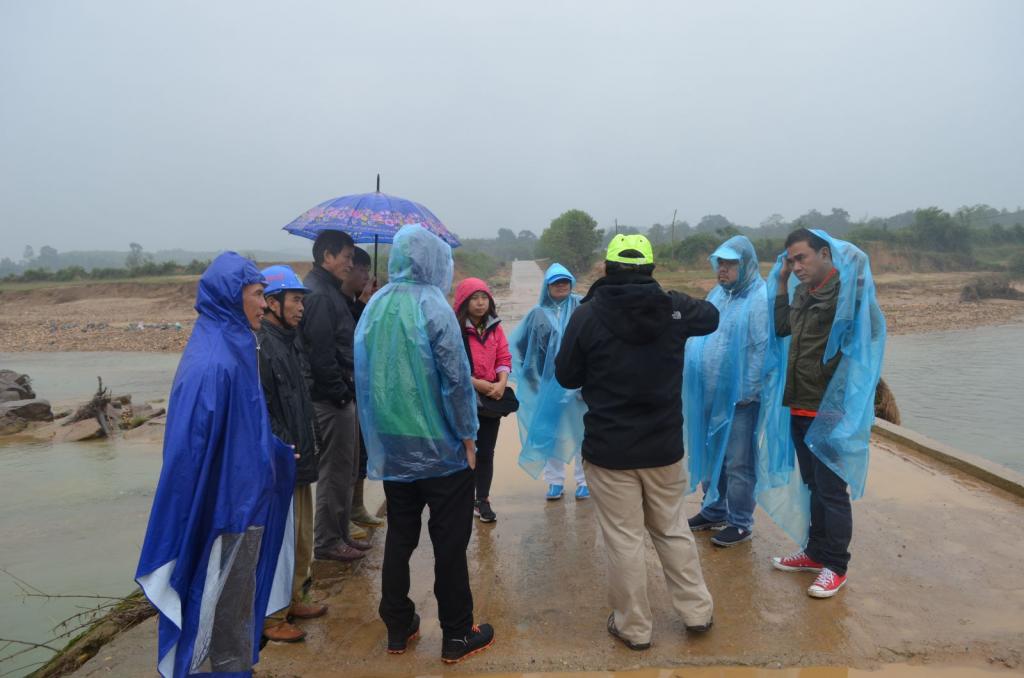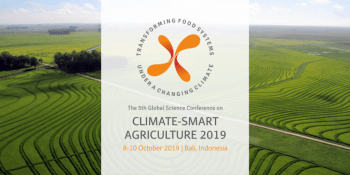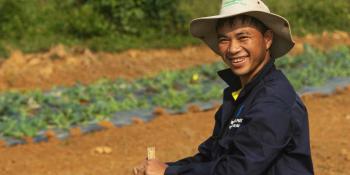“Please share!” – Social learning leads to greater adoption of climate-smart agriculture

Local government officials from Vietnam and the Philippines agree that social learning is important in increasing the scale of climate-smart agriculture.
“We experience different changes in climate, from drought to storms and flooding to cold spells,” said Mr. Ho Van Thai, a farmer from My Loi village, Ky Son commune, Ha Tinh province, Vietnam. These climate-related events are what smallholder farmers in Southeast Asia have to face with.
Climate-smart agriculture (CSA) helps improve the farmers’ climate resilience and at the same time, maintain or increase productivity and mitigate climate change. The World Agroforestry Centre (ICRAF) Vietnam and the International Institute for Rural Reconstruction (IIRR) have been looking at upscaling local adaptation processes in Vietnam and the Philippines.
As a platform for exchanging insights on implementing and increasing the scale of CSA practices, representatives from the local government of the municipality of Guinayangan in Quezon province, Philippines, and ICRAF and IIRR researchers visited My Loi in December 2016. Government officials, researchers and farmers discussed different issues such as hazards that the communities experience. The group also visited farms which implement different CSA practices in My Loi. This is the third exchange visit between My Loi and Guinayangan under the project.
Local government officials from the Philippines discuss disasters with local officials from My Loi, Vietnam. They found that Guinayangan and My Loi address disasters in similar ways. Photo: Trinh Quang Thoai (Vietnam National University of Forestry)
Different experiences, different strategies
The representatives from My Loi shared that they are exposed to various disasters including drought, dry winds, storms, tornadoes and cold spells. CSA practices, such as intercropping, agroforestry and use of improved animal sties, have been implemented to reduce the negative impacts of hazards. On the other hand, Guinayangan experiences long dry seasons and typhoons. Although the municipality has fewer hazards, these can be more intense and lead to great damage.
In addition, according to Mayor Isaac Cesar of Guinayangan: “Many farmers do not own the land they are cultivating which limit the practices they can implement.” The government would have to coordinate with the Department of Agrarian Reform to address this issue. This is however less of a problem in Vietnam, as farmers have access to land for annual cropping or more diverse home gardens and forestry.
Apart from the difference in climate hazards and agrarian issues, the two communities also differ in their farming systems. For example, Guinayangan has many coconut plantations and coastal communities are engaged in capture fishery, while My Loi focuses on acacia monocultures, peanuts and small-scale livestock production.
However, when it comes to addressing climate change, both communities rely on weather forecasting for farm decisions and on implementing appropriate practices. They also plant trees on sloping lands, although the farming system of mostly acacia monocultures in My Loi may be less sustainable compared to that in Guinayangan with fruit, timber and fodder trees. If not managed well, the clear-cutting of acacia in My Loi will cause soil erosion and flash floods in the downstream area.
Tackling climate change with the same approach
Participants of the cross visit agreed that a participatory approach through social learning plays an important role in increasing the scale of CSA. Social learning in their contexts is a process that engages the different partners in the upscaling and outscaling of CSA practices. Interested farmers are first trained by the researchers and technicians on the practices. Those who implement these practices form groups to share their experiences and provide support to one another.
To reach out to other farmers, the communities hold farmer field days and exchange visits. In My Loi, information sources like posters, loudspeaker system, local and national television are put up. The posters and loudspeakers disseminate weather and climate information, agro-advisories and instructions for implementing CSA practices, influencing farmers’ curiosity and willingness to adopt CSA. The media, on the other hand, has encouraged farmers from other villages, communes and provinces to come to My Loi, and ask about vermiculture and buy worms.
Aside from using a bottom-up approach, the local government is also involved through developing programs to support CSA adoption. Ms Le Thi Thao of the Department of Agriculture and Rural Development in Vietnam commented that CSA practices could be integrated into their provincial and district programs, which can reach more farmers and communities.
In Guinayangan, an automated weather station linked to the Municipal Disaster Risk Reduction Office informs the Municipal Agriculture Office (MAO) regarding the 10-day weather outlook. The MAO then formulates and posts a cropping advisory. Recently, the MAO developed a seasonal advisory which is blasted through text messaging to the farmers. They are also planning to put up posters of the seasonal climate advisories for specific crops in 10 impact areas.
The whole process enables visiting farmers and leaders to actually witness CSA practices being implemented on the ground and interact with the farmers who have adopted the practices. This increases trust and encourages CSA adoption. Through social and interactive learning, the participants look forward to the active involvement of the local government and farmers in implementing, disseminating, and monitoring CSA practices. This work is supported by the CGIAR Research Program on Climate Change, Agriculture and Food Security.
Read more:
- Philippine community adopts climate-smart agriculture with greater involvement
- Viet, Khmer, Lao farmer leaders commit to climate-smart agriculture
- Farmers in Southeast Asia learn about climate-smart agriculture practices
Le Thi Tam is a research assistant with the World Agroforestry Centre in Vietnam, working on CCAFS- and USAID-funded projects. Maria Cristina Lorenzo is a researcher with the International Institute of Rural Reconstruction.




